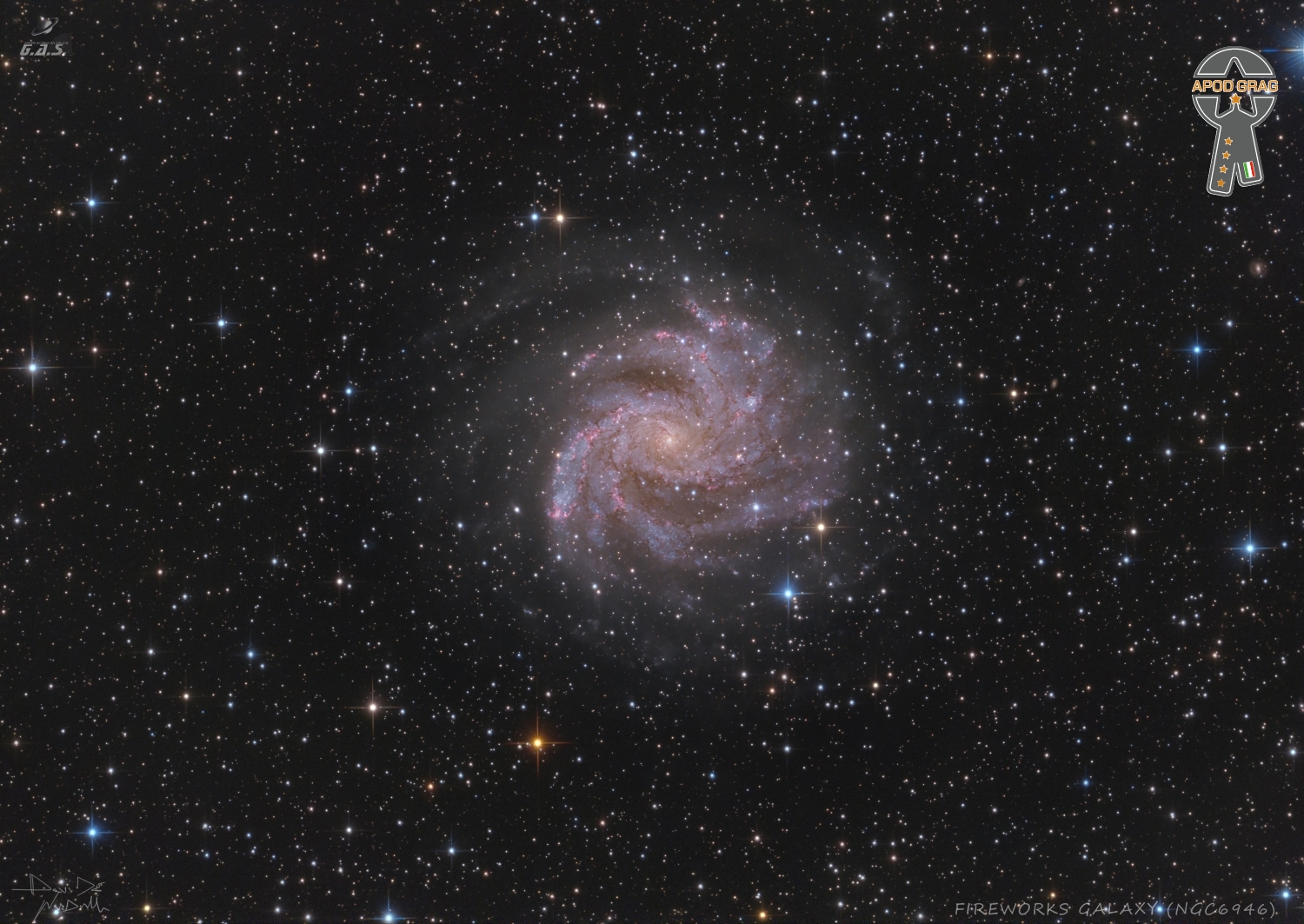Cosmos NGC 6946
NGC 6946, sometimes referred to as the Fireworks Galaxy, is a face-on intermediate spiral galaxywith a small bright nucleus, whose location in the sky straddles the boundary between the northernconstellations of Cepheus and Cygnus. Its distance from Earth is about 25.2 million light-years or 7.72 megaparsecs, similar to the distance of M101 (NGC 5457) in the constellation Ursa Major. Both were once considered to be part of the Local Group, but are now known to be among the dozen bright spiral galaxies near the Milky Way but beyond the confines of the Local Group. NGC 6946 lies within the Virgo Supercluster.
The galaxy was discovered by William Herschel on 9 September 1798. Based on an estimation by the Third Reference Catalogue of Bright Galaxies (RC3) in 1991, the galaxy has a D25 B-band isophotal diameter of 26.77 kiloparsecs (87,300 light-years). It is heavily obscured by interstellar matter due to its location close to the galactic plane of the Milky Way. Due to its prodigious star formation it has been classified as an active starburst galaxy. NGC 6946 has also been classified as a double-barred spiral galaxy, with the inner, smaller bar presumably responsible for funneling gas into its center.
